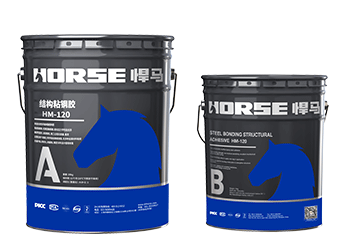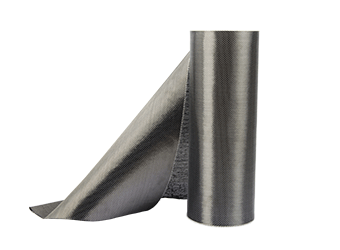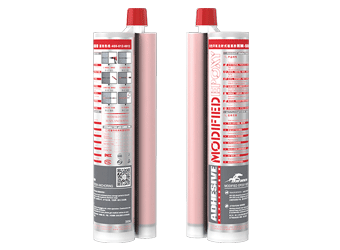Solutions
Horse Construction offers full range of structural strengthening materials with technical supports, documentation supports, products supports, project supports.
Water water conservancy, repair and reinforcement
As an important part of the water conservancy project, the construction quality of the sluice is related to the safety and reliability of the entire project. However, due to the combined action of many factors, the sluice is prone to aging, corrosion, damage and other problems that cannot meet the current operating requirements. Therefore, we must use effective reinforcement technology to eliminate hidden dangers, so as to better serve the development of the water conservancy industry.
Significance of sluice reinforcement in water conservancy projects
Sluices in water conservancy projects are generally located on rivers or channels, and are mainly used for the control and adjustment of river flow and water level. If they are closed, the upstream water level can be raised to block floods, and if they are open, they can provide water to the downstream of the river. Therefore, the rational use of sluices not only has significant economic benefits, but also contributes to the healthy development of water conservancy projects.
However, the sluices in water conservancy projects may have different types and different degrees of quality problems during their use. For example, cracks in the concrete structure, excessive displacement, and concrete cracks in the gate chamber structure have reduced the bearing capacity. The energy dissipation and erosion prevention facilities are gradually destroyed with the extension of use time, resulting in a decline in the energy dissipation and erosion prevention capabilities, and buried safety hazards. The deformation of the main girder of the gate, the destruction of the panel, the defects of the concrete surface and the destruction of the foundation, etc., all pose a threat to the safety and stability of the water project. And this is mostly related to the limited early technology, long years of disrepair, the effects of external forces such as floods, silt, and earthquakes, as well as irregular human operations and poor management. To ensure the safe and reliable operation of water conservancy projects, it is necessary to do a good job in strengthening the sluices. This requires us to base ourselves on reality, optimize reinforcement plans, grasp technical points, strengthen construction management, and strive to improve the quality of sluice reinforcement and extend its service life.
Analysis on key points of sluice reinforcement technology in water conservancy projects
Reinforcement of sluices in water conservancy projects should pay attention to specific analysis. After all, there are many types of sluices and complicated reasons. Therefore, in practice, it is necessary to ensure that the plan is reasonable, the technology is reliable, and the construction specifications. The following combines different parts to analyze the reinforcement technology and its main points.
1) Reinforcement of gate
Since the sluice is put into operation, it will be adversely affected by the external environment, and it will age after a period of time. In addition, the impact of the water flow increases the resonance and causes the gate to be damaged. Therefore, if economic conditions permit, it is best to use cast steel gates to replace the original concrete gates. However, some water conservancy projects clearly require that steel gates should not be used. In response to this situation, it is necessary to strengthen the maintenance efforts to find and solve the problem in time, or to add a working gate slot as a backup, so as to prevent the concrete gate from being inoperable and seriously affecting people's lives and property.
For example, the popular flat steel gates are prone to conflicts and hidden quality hazards when they are jointly designed with hydraulic structures and hoisting machinery. Common problems include inflexible opening and closing, resulting in untimely and inaccurate opening and closing actions, inadequate sealing of water-stop components, water leakage, excessive corrosion of the door body, etc., which restrict the normal function of the flat steel gate. Be timely maintenance and reinforcement. For the rust of the gate, the surface of the gate can be sandblasted and derusted. After the metal luster is exposed, the zinc wire is melted with an acetylene-oxygen flame and then blown to the gate surface until a honeycomb zinc coating is formed, and finally the paint is filled Generate a composite layer with anti-corrosion effect. Regarding the hoisting hoist, it is necessary to perform regular electrical and mechanical cleaning, keep the transmission lubrication, check the working status of the brake, and check whether the wire rope is twisted or knotted. If necessary, apply wire rope oil or replace it, depending on the resistance value, transmission, etc. To be overhauled and maintained. For hydraulic hoist, it is necessary to ensure the cleanliness of the equipment, clean or replace the filter element regularly, replace the hydraulic oil in time, regularly measure the motor phase and iron core insulation resistance, check the stator rotor gap and bearing wear for timely maintenance and replacement, etc. Ensure the sensitive and accurate opening and closing of the flat steel gate.
2) Concrete reinforcement
One is to address the problem of concrete cracks. When the cracks are located on the water part, such as the more serious cracks in the beams and piers caused by the corrosion of steel bars, the damaged concrete welded steel bars need to be removed and repaired with sprayed concrete. If vertical cracks appear at the bottom or side of the beam, the weathered layer should be removed and the expansion bolts should be buried in it. After the steel plate drilling and rust removal operations are completed, a layer of polymer concrete steel plate and concrete surface should be evenly coated, and then the two And tighten the nut until the glue flows out around the steel plate. When the crack layer is located in the underwater part, it can be repaired with the aid of a pneumatic sinker-graded steel cofferdam, that is, the crack surface is cleaned first, a 4cm-deep U-shaped groove is cut along its direction, and a grouting with a spacing of 60cm and a depth of 20cm Hole and pulp hole. The grouting hole should be connected to the facility above the water surface, and then the sealant should be embedded in the groove and pressed tightly. It can be pressed by a pressing plate, or fixed with steel plate and bolts. Finally, the grouting is continued under the action of the grouting pump. The material can be LW +HW water-soluble polyurethane.
Second, in view of the concrete carbonization problem, appropriate treatment methods should be selected according to the severity. Under normal circumstances, when the carbonization is serious but the protective layer has not been touched, in order to prevent chloride ions from further corroding the concrete, the surface should be roughened, washed and sealed with epoxy thick grout. If the carbonized concrete has reached the protective layer, it is best to completely remove the carbonized part, after washing it, paint high-strength mortar, and seal the exposed concrete with epoxy thick grout. If the steel bars are corroded, swelled or even cross-section does not meet the design requirements under the influence of carbonization, the welded steel bars must be tied up, then painted with high-strength mortar and poured epoxy thick grout to complete the reinforcement treatment.
3) Foundation reinforcement
The sluice may have foundation leakage during long-term operation. Certain principles should be followed when taking reinforcement measures, that is, water conservancy and foundation seepage slope should be reduced and increased respectively to achieve the purpose of anti-seepage. Usually can extend upstream anti-seepage cover, repair downstream drainage facilities, filtering facilities or use grouting technology for foundation reinforcement. For lateral anti-seepage, it can be achieved by deepening and extending side walls and grouting treatment. If the grouting technology is a jet grouting process, the process flow should be strictly enforced, operation management should be strengthened, and drilling and jet construction should be emphasized so as not to affect the reinforcement effect.
4) Reinforcement of lock chamber
We should also pay attention to the structural deformation and damage of the lock chamber. In this regard, intensive drilling can be set on the side with less settlement, and the silt in the holes can be cleaned in batches in order to reduce the local foundation stress as much as possible, and to ensure that the soft soil foundation moves smoothly to this side. The purpose of correcting the displacement is achieved by appropriately increasing the settlement of the sluice chamber. It is worth mentioning that during the reinforcement construction process, neither the soil inside the base nor the hard soil or the soil deep in the borehole can be taken. And combined with the use of high-pressure jet grouting technology to repair cracks, so as to enhance the strength of the foundation, improve its bearing capacity, reduce the water content of the soil, and achieve the dual goal of strengthening and preventing seepage.
Concluding remarks
In short, the reinforcement of sluices in water conservancy projects is necessary and important. This requires us to start from the actual situation of the project, clarify the cause of the sluice damage, design an optimized reinforcement plan, and strengthen construction operation management. Only in this way can we obtain the expected reinforcement effect, improve the safety and stability of the project, and then operate reliably and benefit the people.
You can find anything here you are in need of, have a trust trying on these products, you will find the big difference after that.

Two-component epoxy modified epoxy structural strengthening adhesive for bonded steel plate to concrete

High strength, unidirectional carbon fiber fabric pre-saturated to form a carbon fiber reinforced polymer (CFRP) fabric used to strengthen structural concrete elements.

Two-components modified epoxy resin adhesive, with high quality plastic tube, double cartridge package for anchoring